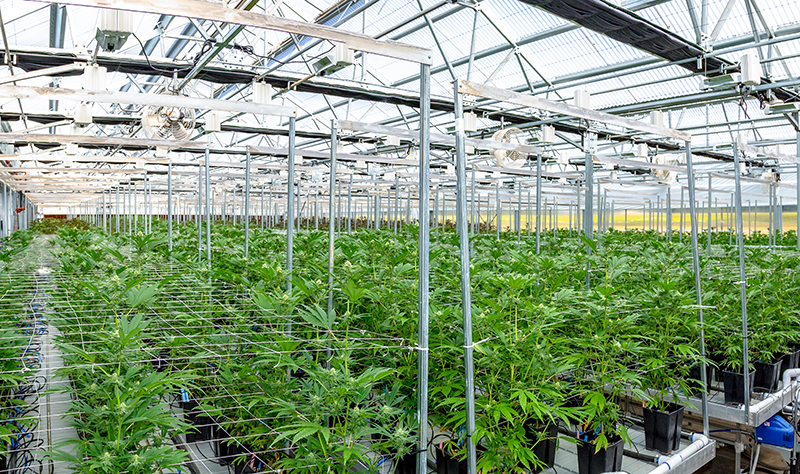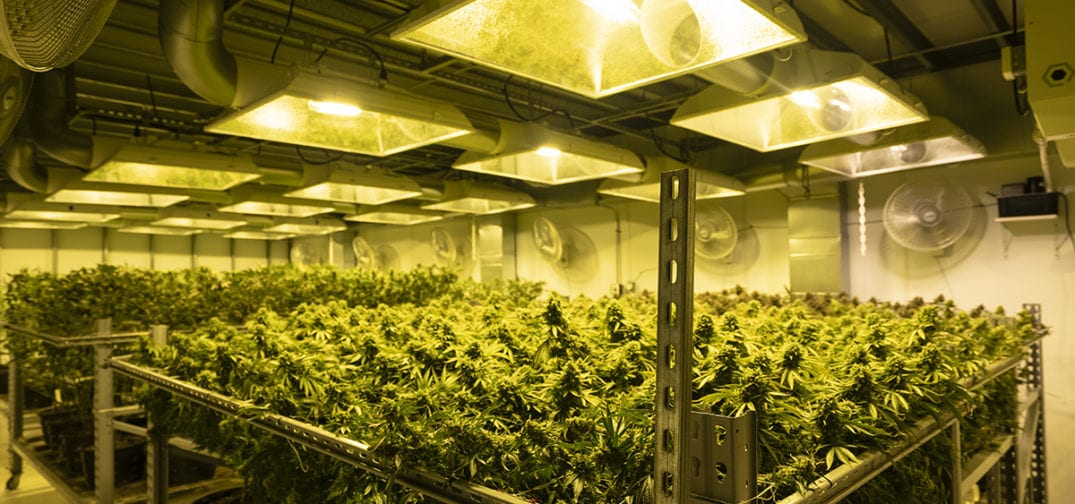Evan Mills, Ph.D. of the Lawrence Berkeley National Laboratory, and Scott Zeramby have revealed a new chapter in the upcoming “Routledge Handbook of Interdisciplinary Cannabis Research,” entitled “Energy Use by the Indoor Cannabis Industry: Inconvenient Truths for Producers, Consumers, and Policymakers.” The report takes a critical look at indoor cannabis cultivation in the age of climate change.
According to its authors, the work, “pinpoints blind spots in regulation, outlines research and analysis needs, argues for consumer information and protections against greenwashing and industry capture of regulatory and green-certification processes, and offers recommendations for incorporating energy considerations into the broader tapestry of cannabis policy.”
Cannabis and the Climate
Expanding on a 2012 investigation by Mills, the authors blame the lack of research into indoor cannabis production’s carbon footprint squarely on its status as a controlled substance and the subsequent need to produce, process, and distribute cannabis “in the shadows.” The authors, however, are quick to point out that legalization hasn’t increased transparency into the energy use of indoor cannabis production.
“Although the impacts of outdoor cultivation on ecosystems have received considerable attention …, those associated with far more energy-intensive indoor cultivation have only rarely been evaluated and integrated into policy-making, even in the post-prohibition era. Indeed, cannabis cultivators continue to be passed over by almost every energy policy instrument developed since the first modern energy crisis of nearly half a century ago.” — Excerpt from ‘Energy Use by the Indoor Cannabis Industry: Inconvenient Truths for Producers, Consumers, and Policymakers’
Mill’s 2012 work found that indoor cannabis production was using 20 billion kilowatt-hours (k/h), producing up to 15 million metric tons of CO2, and ran a monetary expenditure of six billion dollars annually. At the time, these rates of consumption penciled out to nine percent of California’s household energy consumption, three percent of state-wide energy use, and one percent of all electricity used in the United States. According to the report, indoor cannabis production’s very nature contributes to its astronomical strain on energy grids, requiring year-round lighting, constant simulation of tropical environments, humidity controls, CO2 injections, and other miscellaneous energy uses.
To put it in terms of consumer carbon consumption, the study found that producing one gram of indoor cannabis in California — a state known for its high energy-efficiency standards — is equal to ten pounds of carbon, running ten ten-watt LEDs for 76 hours, or the energy equivalent of 70 gallons of oil. The authors cite more recent studies showing similar results with indoor cannabis production in Colorado using 0.6% of statewide energy and Denver growers hoarding four percent of that city’s power.
Untold externalities like building damage due to mold, power outages, adverse effects on worker health, outdoor carbon emissions due to land-use changes, hazardous waste associated with indoor growing from mercury-laden light bulbs to chemical-ridden mineral wool destined for landfills and finally extra energy costs for technologies such as UV lighting to remove mold and water filtration drive up the environmental impact of indoor production. Other processes the work cites as adding to cannabis’s carbon footprint include excessive transportation, cold storage due to overproduction and water evaporation from reservoirs, producing power for indoor production, energy used in soil production, pesticide synthesis, and building construction.
Current Energy Efficiency Efforts Aren’t Working
Large scale greenhouses have been touted as less carbon-intensive growing facilities, but a recent look into the practice in Canada showed that — due to the need for extra lighting, heating, cooling, and dehumidification wherever natural gas was used for heating — cannabis greenhouses can use up to a third of the energy as similar sized indoor grow sites. Cannabis production also puts a strain on renewable energy availability, siphoning off renewable energy originally designed to serve homes and less intensive commercial applications.

In the name of security and economic growth, local well-intended regulations have led to extra energy consumption, the authors say. It doesn’t help that some localities such as the state of Illinois and Nevada County, California have completely banned outdoor cultivation. Seeking to attract a larger tax base, some geographies like the Coachella Valley in California — where conditions are optimal for outdoor growing — have put large, counterproductive minimum square footage requirements on indoor facilities. Other cities have put surcharges on electricity to de-incentivize indoor growing, especially for the unregulated market, but this simply drives growers to more energy-intensive practices like using diesel generators. The authors contend that even well-thought-out incentives like tax rebates and credits for energy efficiency have the undesired effect of keeping cultivators indoors rather than moving them to the outdoors.
Compounding the issue are market forces where the perception is indoor cannabis is of a higher quality than outdoor cannabis and consumers are unaware of the environmental impact of indoor cannabis cultivation.
“It is notable,” the authors write, “that the ‘ethical purchasing’ movement (consumers seeking to vote with their dollar, e.g., to promote sustainable products) has barely emerged in the cannabis marketplace and, perhaps fearing stigmatization, environmental organizations have conspicuously sidestepped the issue.”
Difficult Solutions
Mills and Zeramby support legalization but do not believe that action alone is enough to address the environmental impact of indoor cultivation. They say before best solutions can be developed, more “representative and useful” data is needed from producers and utilities. Additionally, they argue that greater transparency in energy use practices must come forward, better consumer information is needed, anti-competitive market distortions like efficiency incentives should be removed, externalities must be considered, improve testing protocols developed, and more public R and D should emerge.
Even if all these goals are met, their primary recommendation is to move the vast majority of cannabis cultivation outdoors, a practice the authors argue sufficed for much of human history.
The chapter concludes with a cautionary warning from the authors:
“Those citing climate pollution as a reason not to legalize cannabis are missing the point: legalization is necessary—but not sufficient—for addressing the problem. Yet, if done poorly, legalization can make the problem worse. Indeed, history may judge today’s cannabis policymakers as betraying the public trust by enabling an industry with such a large carbon footprint. ” — Study excerpt
Get daily cannabis business news updates. Subscribe
End
